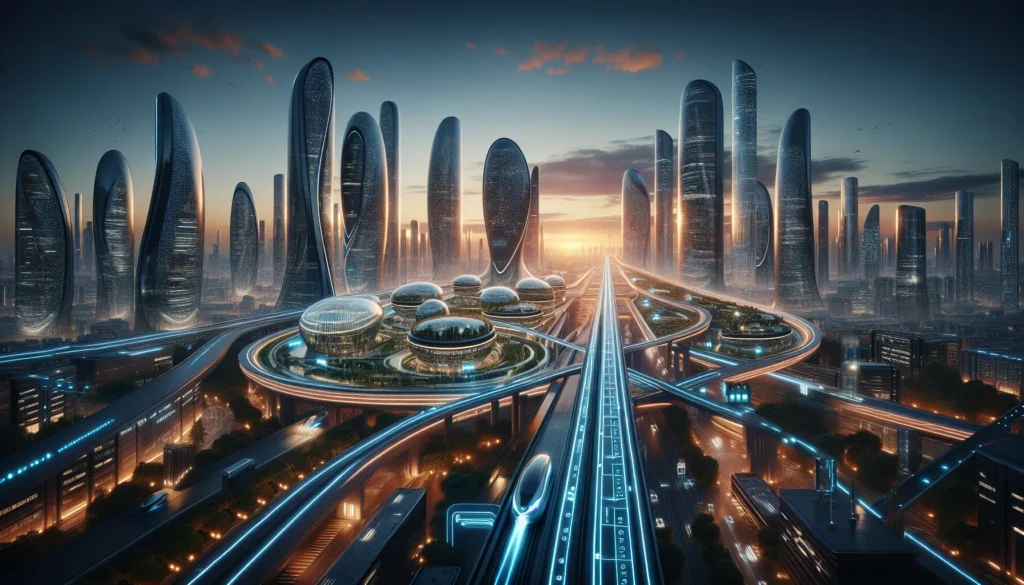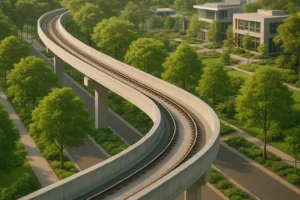Smart infrastructure is reshaping our world in unprecedented ways. From IoT revolutionizing tracking to self-orchestrating systems optimizing supply chains, the impact is far-reaching and transformative. This article presents key insights from industry experts, exploring how these innovations are creating more responsive, efficient, and interconnected systems across urban and rural landscapes.
- IoT Revolutionizes Tracking and Privacy Landscape
- Predictive Network Orchestration Transforms Supply Chains
- Smart Systems Bridge Urban-Rural Infrastructure Gap
- Adaptive Cities Respond to Real-Time Needs
- Self-Orchestrating Infrastructure Optimizes Entire Supply Chains
IoT Revolutionizes Tracking and Privacy Landscape
Interoperability of IoT (Internet of Things), Edge computing, and movement of people and goods. We are beginning to see this with tracking of FedEx and Amazon, but imagine 10 years from now:
The good – All people, packages, and goods will be traceable in real time. No more losing your wallet or phone, waiting for a passenger from a plane or train without knowing their location.
The bad – Less and less privacy. Imagine someone having the ability to scrape data from many cameras and monitors to see you in transit, even if in a remote park (remember satellites)!
 Neil OConnell
Neil OConnell
Managing Director, Interactive Consulting Partners
Predictive Network Orchestration Transforms Supply Chains
From my perspective, the most exciting yet unrealized potential of smart infrastructure lies in what I call “predictive network orchestration”—where entire supply chain ecosystems become not just connected, but truly anticipatory.
We’re just scratching the surface of what’s possible when IoT, AI, and real-time data converge across multiple partners. We’ve seen how even basic connectivity between systems dramatically improves outcomes, but the future I’m most optimistic about goes beyond individual warehouse automation.
Imagine a fulfillment network that doesn’t just react to demand signals but autonomously reconfigures itself in anticipation of them. When a storm is forecasted in Florida, inventory could preemptively shift to optimal locations, carriers could be secured ahead of surge pricing, and customers would experience zero disruption—all without human intervention.
I’ve spent years watching e-commerce brands struggle during unexpected demand spikes or disruptions. One customer lost millions during a viral TikTok moment because their inventory was in the wrong location and their 3PL couldn’t scale fast enough. With truly smart infrastructure, that pain disappears.
What excites me most is democratization. Right now, only the largest retailers can afford sophisticated supply chain technology. But as smart infrastructure becomes more accessible, smaller brands will compete on equal footing. The mom-and-pop business with fantastic products will leverage the same logistics intelligence as industry giants.
We’re also approaching a tipping point where sustainability becomes embedded in logistics decision-making rather than treated as an afterthought. Smart infrastructure will optimize not just for speed and cost, but for carbon impact, packaging waste, and overall environmental footprint.
The technology exists today, but the industry integration doesn’t yet. When it does, we’ll see a massive shift from the transactional relationships that define logistics to true ecosystem partnerships where success is mutual and measured in long-term value creation.
 Joe Spisak
Joe Spisak
CEO, Fulfill(dot)com
Smart Systems Bridge Urban-Rural Infrastructure Gap
Smart infrastructure’s most underappreciated benefit is its potential to dramatically reduce resource inequality between urban and rural communities through distributed intelligence systems.
Last year, we helped a client’s small town implement smart water management technology that previously would have required metropolitan-level resources. This system detected leaks, optimized pressure, and reduced water loss by 37%—bringing small-town infrastructure performance in line with major cities at a fraction of the traditional cost.
The infrastructure gap between resource-rich urban centers and smaller communities has traditionally limited economic development and quality of life in rural areas. Smart systems are changing this equation by replacing massive physical infrastructure with distributed sensors and AI-driven optimization that can be deployed anywhere at relatively low cost.
This democratization of infrastructure quality creates opportunities for economic development in previously overlooked regions. Businesses that once required proximity to major urban centers can now operate successfully in smaller communities that offer smart connectivity but lower costs and different quality of life advantages.
For communities exploring smart infrastructure, I recommend starting with focused applications that address specific local challenges rather than comprehensive smart city initiatives. Water management, energy optimization, or targeted transportation improvements typically deliver more immediate value than sweeping transformations.
The most promising future for smart infrastructure isn’t the creation of showcase smart metropolises, but rather the elimination of the infrastructure gap that has limited opportunity in smaller communities. This more equitable distribution of infrastructure capability could fundamentally reshape population distribution and economic opportunity.
 Matt Bowman
Matt Bowman
Founder, Thrive Local
Adaptive Cities Respond to Real-Time Needs
One of the most exciting benefits of smart infrastructure that we haven’t fully tapped into yet is its potential to completely transform how cities respond in real time to people’s needs—almost like having a living, breathing city that adapts with you. I’m most optimistic about the rise of intelligent traffic and transit systems that learn from patterns and self-adjust. Imagine this: instead of waiting at a red light at 2 a.m. with no cars around, the system reads your presence, adjusts the signals, and lets you go. I’ve seen pilot programs like that in smaller cities, and the difference in flow and energy use is huge.
But the real game-changer? Equity. Smart infrastructure could level the playing field—bringing fast internet to underserved neighborhoods, reducing pollution in historically neglected areas with better traffic routing, and making public spaces safer through adaptive lighting or emergency response integration. We’re close, but once cities can layer all this tech together in a way that’s seamless and human-centered, it won’t just be about convenience—it’ll be about connection, access, and dignity. That’s what I’m really hopeful for.
 Julian Knox
Julian Knox
Marketing & PR Coordinator, Blankoon Cocktails & Events
Self-Orchestrating Infrastructure Optimizes Entire Supply Chains
From my perspective, one of the most exciting, under-realized benefits of smart infrastructure is real-time, dynamic optimization across entire supply chains—not just at the warehouse or fleet level, but network-wide.
I’m most optimistic about infrastructure that thinks ahead:
Imagine highways, ports, and distribution centers that self-orchestrate based on demand surges, weather disruptions, or labor availability—rerouting freight, rescheduling pickups, and reallocating assets autonomously in real time.
This kind of hyper-responsive logistics ecosystem could eliminate costly inefficiencies, reduce emissions, and give businesses unprecedented agility.
 Josh Gilbert
Josh Gilbert
Managing Partner, Gilder Group







